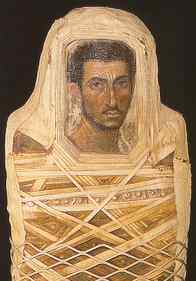 Did you know that encaustic is the oldest painting medium in the world? This portrait painted somewhere between the first and second century was placed on a sarcophagus containing the mummified body of an Egyptian person. The portrait has survived to our time with colors as fresh as contemporary works. Fascinating to say the least.
Did you know that encaustic is the oldest painting medium in the world? This portrait painted somewhere between the first and second century was placed on a sarcophagus containing the mummified body of an Egyptian person. The portrait has survived to our time with colors as fresh as contemporary works. Fascinating to say the least.
But what is encaustic and how is it different from the paint we know you ask? Encaustic is primarily made of beeswax (you can substitute other types of waxes today); mixed with damar resin it hardens the wax to which you add pigment to give it color. To make the mixture you heat the wax and mix in crushed damar resin (8 parts wax to 1 or 2 parts of resin– varies according to use) until the mixture is liquid. In the final step color is mixed in before it is transferred to trays for cooling and solidifying. The cakes of colored wax can be stored at this stage or re melted as needed. Various implements are used to melt the colored wax(hotplates, irons, stylus, hot air gun, torch) which is then applied to a hard backed substrate (wood panels, canvas or paper covered boards, glass or plexi or other combinations). The wax is applied with a variety of instruments: Hake brushes (best choice), sticks, or dripped and poured to be shaped, scraped, scored and fashioned in a number of ways. You can include collage materials, do image transfers on wax, embed objects, and build wonderful layers of transparencies. You can also combine textiles, fond objects and work in 3-D. The combinations are simply endless. See varied examples on Joanne Mattera’s encaustic conference web site or from Daniella Woolf’s blog, both are encaustic artists who published significant books on the subject.
A visual tutorial on how to make encaustic is available from this wonderful web site. It informs on the methods and materials used in encaustic painting. To know more about history a google search will turn up a number of sites.
But you don’t need to make your own encaustic paints; you can buy prepared encaustic cakes that are already colored with pigments. Kama pigment in Montreal make their own. Encaustikos (sold in tins) and R&F are probably the most popular. Curry’s art supplies carries the former. Encaustic paint is pricey but there is nothing like it….I know….
In June I was awarded a continuing education scholarship to take a week long workshop in encaustic painting with the artist Lisa Pressman at Peter’s Valley Craft School in New Jersey. What a place; the 40 year old school is in a national park. It houses the a number of old buildings with fully equipped studios where they teach various crafts from weaving and ceramics to woodworking and ironwork but also photography, fine jewelry, fiber arts, painting etc. A whole community of artists interested in teaching and learning traditional and modern techniques. It was a lot of work but lots of fun and I met some wonderful people. In fact Lisa posted a picture of us on the last day when we were cleaning up and totally exhausted from the heat and work. What was I thinking! In 38 degree weather, no air conditioning we were working with hot plates, hot air guns and torches. We melted the wax and melted in turn; hot to say the least. The picture is from Lisa’s blog. If you scroll down the page you will find pictures of the beautiful wilderness the studio was in and pictures of the inside mess that is inevitable when you paint with encaustics. A few of my own paintings are found there too. But here are a few more:
You may be asking if encaustic is even possible with children. I say it would be possible with older teens and young adults in a well ventilated area under supervision. But more difficult in a psychiatric environment unless working one on one. The wonder of encaustic is its versatility but also the sweet smell of beeswax and the sensuous malleable texture that yields to touch and shaping. There is an important tactile dimension that grabs your senses like no other medium. A while ago (1996) I did a series of wrapped objects in strips of textiles that were first printed and then dipped in wax. It was meant as a transitional ritual where I mummified objects that belonged to my family’s daily life and ‘made them special’ and thus other, while preserving their basic shapes. It was at a time my father was slipping away into Alzheimer’s disease and I was going through many transitions of my own. The fact that my father had also been an enthusiastic beekeeper was also quite significant. I was working with wax from HIS beloved bees. It was my way of ‘binding’ my feelings and transforming them, a ritual process of saying goodbye to what was known, a funeral rite of my own. I remember the process as very significant, a process that taught me much about the power of art to create meaning from difficult situations. No pictures unfortunately.
Classé dans art education, art process, art retreats, art therapy, daniella woolf, encaustic, encaustic suppliers, joanne mattera, lisa pressman, mummifying.
Catégorisé dans Apprentissage, Arts, Création.
Publié le 21 août 2010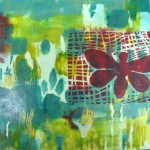
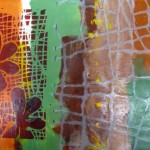
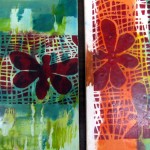
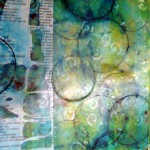
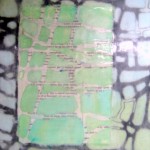

Le 14 jan 2012 à 12:28
Nicely written